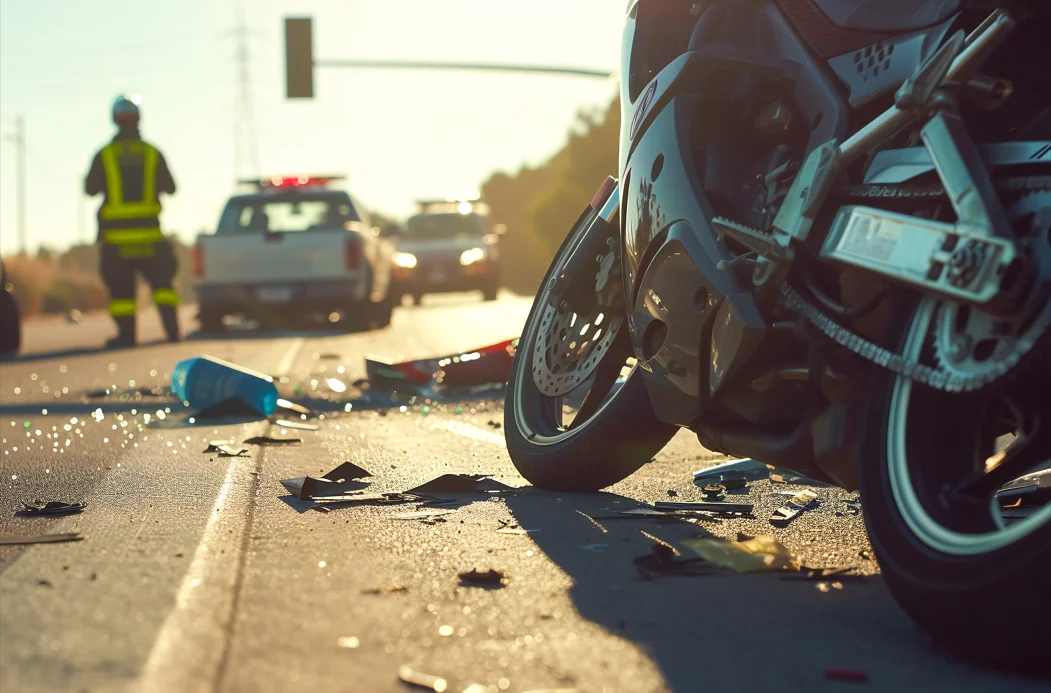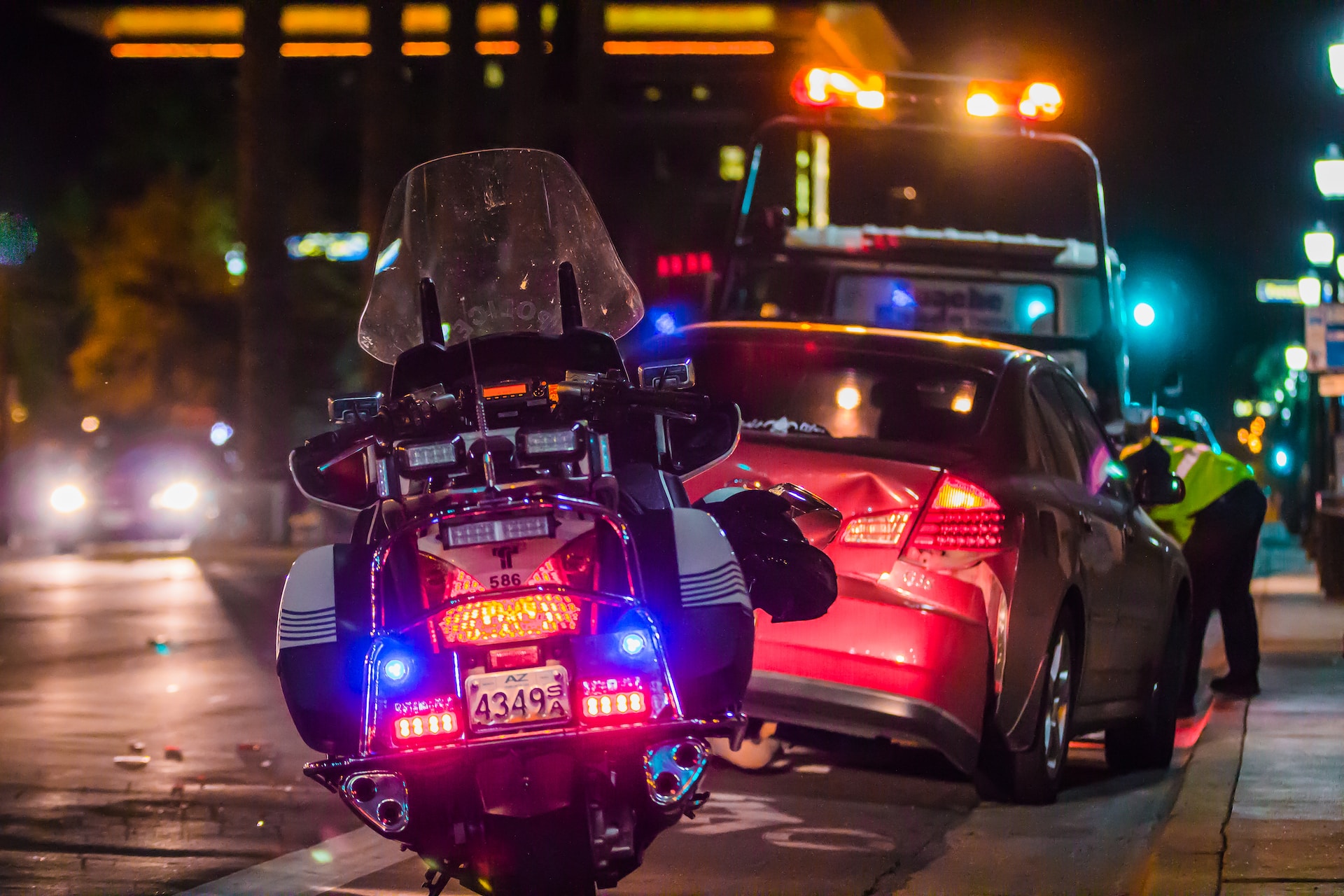There’s nothing like the thrill of riding a motorcycle. The open road stretches ahead, the wind rushes by, and you feel a true sense of adventure. But with that excitement comes responsibility, as motorcyclists face unique risks on the road. Motorcyclists are especially vulnerable to accidents, and for a variety of reasons.
Common causes of motorcycle accidents include:
- Left-Turn Collisions
- Loss of Control
- Speeding
- Alcohol Impairment
- Fixed Objects
- Road Hazards
Motorcycle Accident Causes – Explained
Left-Turn Collisions
One of the most frequent scenarios leading to motorcycle accidents involves other vehicles making left-hand turns. These collisions account for a large number of incidents, which occur when a car turns left in front of an oncoming motorcycle. Intersections are particularly hazardous for motorcyclists due to left turn mishaps.
Loss of Control
Single-vehicle accidents are also common for motorcycles, especially as it relates to loss of control. Factors that lead to loss of control include braking too much, not turning enough, or going too fast on a curve. The Hurt Report is a detailed study on motorcycle safety. It found that rider errors like loss of control caused about two-thirds of single-vehicle accidents.
Speeding
Excessive speed significantly increases the risk of accidents and injury severity. Seem obvious? Well, it continues to be a key reason for many motorcycle crashes. Speeding makes it harder for a rider to react to sudden dangers. It also increases how far it takes to stop.
Alcohol Impairment
Riding a motorcycle while drunk affects your judgment, coordination, and reaction times. This increases the chance of accidents. The National Highway Traffic Safety Administration (NHTSA) reports that alcohol involvement is a significant factor in motorcycle-related fatalities.
Fixed Objects
Collisions with fixed objects, such as guardrails or trees, are particularly deadly for motorcyclists. In 2020, 25% of motorcycles involved in fatal crashes collided with fixed objects, compared to 18% for passenger cars.
Road Hazards
Motorcycles are more vulnerable to road hazards like potholes, uneven pavement, and debris. These irregularities can cause riders to lose control, especially if encountered unexpectedly or at high speeds. The NHTSA emphasizes that environmental factors, including roadway conditions, significantly affect motorcycle safety.
What Percentage of Motorcycle Riders Get in Accidents?
Determining the exact percentage of motorcycle riders involved in accidents is challenging due to varying reporting practices and data limitations. However, motorcycles account for a disproportionate number of traffic fatalities relative to their presence on the road.
According to the National Safety Council, motorcyclists accounted for 14.6% of all traffic fatalities and 3.5% of all injuries in 2022. That is despite the fact that motorcycles make up only 3% of all registered vehicles. They also only account for 0.7% of all vehicle miles traveled in the United States.
What Percent of Motorcycle Accidents Result in Injury or Death?
Motorcycle accidents often result in serious injuries or fatalities due to the lack of protective barriers. The Insurance Institute for Highway Safety reports that motorcycle deaths accounted for 15% of all motor vehicle crash deaths in 2022.
Additionally, the NHTSA estimated that 82,686 motorcyclists were injured in 2021, a 5% increase from the previous year.
Numbers Don’t Lie – Be Safe Out There
These eye-opening statistics highlights the need for attention to safety measures. These include wearing helmets, following speed limits, avoiding alcohol before riding, and road condition awareness. Both motorcyclists and other motorists share the responsibility of ensuring safer roadways.
Practicing safe motorcycling is essential for reducing the risk of accidents and severe injuries. Wearing protective gear, especially a DOT-approved helmet, significantly decreases the chances of fatal head injuries.
Additionally, motorcyclists should undergo safety training courses. Training courses will enhance their riding skills, defensive driving techniques, and hazard awareness. The Wisconsin DOT encourages riders to take motorcycle safety courses, which can also help in obtaining a motorcycle endorsement.
Understanding Motorcycle Laws
Understanding and following motorcycle laws is another critical component of rider safety. Each state has its own regulations regarding helmet use, licensing, and lane-splitting. In Wisconsin, helmets are required only for riders under 18 and those with instructional permits.
However, all motorcyclists must wear eye protection unless their bike has a windshield. Additionally, Wisconsin law prohibits lane-splitting. Lane splitting involves riding between lanes of traffic—a practice that is legal in some other states. Staying informed about these laws helps riders avoid legal issues and enhances overall road safety.
 Calls Answered 24/7
Calls Answered 24/7










